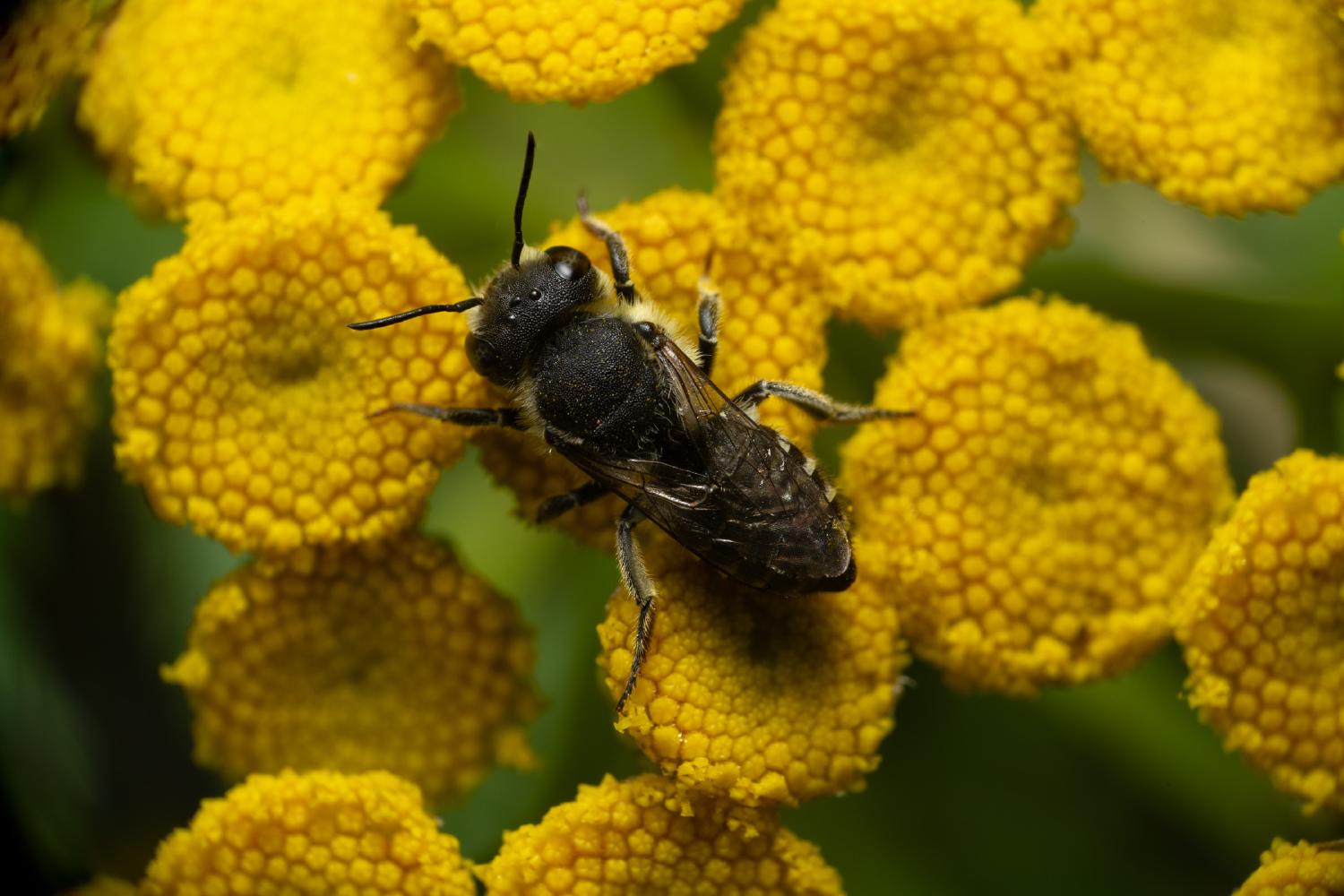Leafcutter, Mortar, and Resin Bees
Lat. “Megachile“
genus
of epifamily
“Bees“
1 genus, 2 species
The genus Megachile consists of bees that build nests in the ground or in hollow twigs, with nests typically made up of long columns of cells. Females lay eggs in each cell along with a supply of food, and after consuming the food and going through several stages of development, they emerge as adults. Some Megachile species use cut leaves to line their nests, while others use plant resin. The genus has 56 subgenera and 1520 recognized species, including notable species such as Megachile pluto, the largest bee in the world, and Megachile sculpturalis, the giant resin bee. Some Megachile species lack a lobe between their claws, making them unable to climb smooth surfaces.
Hierarchy
Ecology
Nests are sometimes constructed within hollow twigs or other similarly constricted natural cavities, but often are in burrows in the ground. Nests are typically composed of single long columns of cells, the cells being sequentially constructed from the deepest portion of the tunnel outwards. The female places an egg in each cell with a supply of food, generally pollen, sometimes mixed with nectar. She builds a cap and walls off the cell. The larva hatches from the egg and consumes the food supply. After moulting a few times, it spins a cocoon and pupates, often after several months of hibernation as a prepupa. It emerges from the nest as an adult. Males, which are typically smaller and emerge in advance of females, die shortly after mating, but females survive for another few weeks, during which time they build new nests. Numerous families of wasps and bees parasitize Megachile nests, including Gasteruptiidae, Leucospidae, Sapygidae, and various kleptoparasitic megachilids, such as the closely related genus Coelioxys. M. rotundata and M. campanulae are among of the first insects documented in scientific literature to use synthetic materials for making nests.Many Megachile species use cut leaves to line the cells of their nests. It is thought that the leaf discs help prevent the desiccation of the larva’s food supply. Various species in the genus, especially those in the subgenus Chalicodoma and related groups, do not use cut leaves to line the cells, but instead use fairly dry plant resin, which they carry in their mandibles. The subgenus Chalicodoma includes the world’s largest bee, Megachile pluto, as well as one of the largest megachilids in the United States, the recently introduced Asian species, Megachile sculpturalis. Some Megachile species have no lobe (arolia) between their claws, thus are unable to climb smooth walls or glass.
Diversity
The genus Megachile contains 56 subgenera with 1520 recognized species. See also the list of Megachile species. Notable subgenera:
Callomegachile Chalicodoma ChelostomoidesNotable species:
Megachile albisecta (Klug, 1817) Megachile campanulae, bellflower resin bee Megachile fidelis, faithful leafcutting bee Megachile perihirta, western leafcutting bee Megachile pluto, the largest bee in the world Megachile rotundata, alfalfa leafcutter bee Megachile rubi Megachile sculpturalis, giant resin bee Megachile texana, Texas leafcutter bee
References
Baker, D.B. & M.S. Engel, 2006: A New Subgenus of Megachile from Borneo with Arolia (Hymenoptera: Megachilidae). American Museum Novitates 3505 : 1–12. doi:10.1206/0003-0082(2006)505[0001:ANSOMF2.0.CO;2]. Full article: [1]. Durante, S. ; A.H. Abrahamovich & M. Lucia, 2006: The subgenus Megachile (Dasymegachile) Mitchell with special reference to the Argentine species (Hymenoptera: Megachilidae). Neotropical Entomology 35 (6): 791–802. Abstract and full article: doi:10.1590/S1519-566X2006000600012. Durante, S.; Cabrera, N. 2009: Cladistic analysis of Megachile (Chrysosarus) Mitchell and revalidation of Megachile (Dactylomegachile) Mitchell (Hymenoptera, Megachilidae). Zootaxa, 2284: 48–62. Abstract & excerpt Engel, M.S., 2008: A new species of Megachile (Eutricharaea) from western Saudi Arabia related to Megachile walkeri (Hymenoptera: Megachilidae). Acta Entomologica Slovenica 16(2). Niu, Z.-Q.; Wu, Y.-R.; Zhu, C.-D., 2012: A review of Megachile (Chelostomoda) Michener (Megachilidae: Megachilini) known from China with the description of a new species. Zootaxa, 3267: 55–64. Preview Wu, Y.-R., 2005: A study on the genus Megachile Latreille from China with descriptions of fourteen new species (Apoidea: Megachilidae). Acta Zootaxonomica Sinica 30 (1): 155–165.
External links
Megachile Identification Guide (female) discoverlife.org Megachile Identification Guide (male) discoverlife.org List of Species discoverlife.org Worldwide Species Map discoverlife.org
Ancestry Graph
Further Information
Copyright

This article uses material from the Wikipedia article Megachile the free encyclopedia Wikipedia which is released under Creative Commons Attribution-ShareAlike 4.0 International License). On Wikipedia a list of authors is available.
